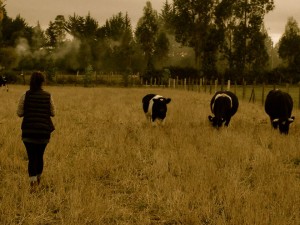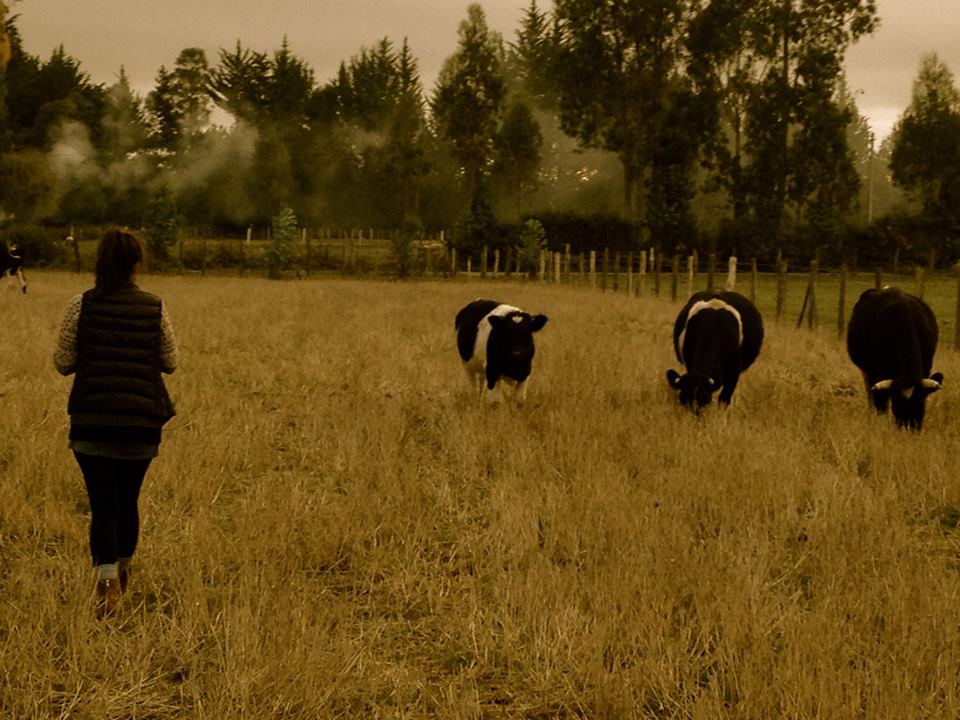
By Maeve Hogel
Argentina is world renowned for being one of the largest producers and consumers of beef. I just returned from a year studying there and having been served beef at practically every meal, I can attest that it lives up to its reputation. As someone who is always looking for grass-fed meats and prefers to buy local, I was pleased both by the delectable taste and the environmental friendliness of Argentine beef. The cattle are free to roam farms freely with their diets being mainly grass, unlike the diets of corn that are common in the United States. In the rural areas, many farms are still small and feed only the local people, such as the one pictured above. However, what I failed to think about until reading Anna Lappe’s Diet for a Hot Planet was the effect that all of these cows in Argentina, and all over the world, have on climate change simply by existing.
Many are familiar with the connection between greenhouse gases and global warming. Particularly, we understand how humans can cause increases in carbon dioxide emissions. However, aside from carbon dioxide there are other greenhouse gases that are also important players in climate change that many, including myself, often forget to consider. As Lappe points out in her book, “though the livestock sector contributes only 9 percent of global carbon dioxide emissions, its responsible for 37% of methane and 65% of nitrous oxide emissions” (Lappe, 26).
As I was sitting down to enjoy a delicious argentine steak, I certainly was not considering how that cow had affected climate change. Climate change is far from most people’s minds while they are enjoying their lunch or dinner, but maybe it shouldn’t be. Lappe’s book is filled with fascinating personal stores and interesting facts about farming not only in the United States, but in many parts of the world. Yet, for me, the fourth section of her book in which she titled “Action” is a must read for everyone (Lappe, 218). I’m absolutely a meat lover, so I will never suggest that we should all become vegetarians in order to prevent more greenhouse gas emissions. However, Lappe’s 7 principals of a climate-friendly diet are important ideas to keep in mind both for personal health and for the health of our planet. We all can eat more real foods, look for organic, lean towards local, and send packaging packing as Lappe suggests (Lappe, 218). Often we let ourselves believe that we personally can not make a difference, but when it comes to food we make a conscious choice about what we eat and where it comes from and hopefully we all start fitting climate change into the equation when making those choices.


The choices we make about the foods we eat is often overlooked as a strategy for reducing GHG footprints. I haven’t made any calculations, but a campaign to encourage Dickinson students and employees to commit to one meatless day per week could have a substantial impact on our GHG emissions.
Yes, that Argentine steak still has its footprint but if your going to eat meat the free-roaming, grass-eating cattle you described from Argentina is the way to go. In an ideal world we’d regulate or mitigate CAFO’s and divert back to this more natural livestock picture based on locality that you described.